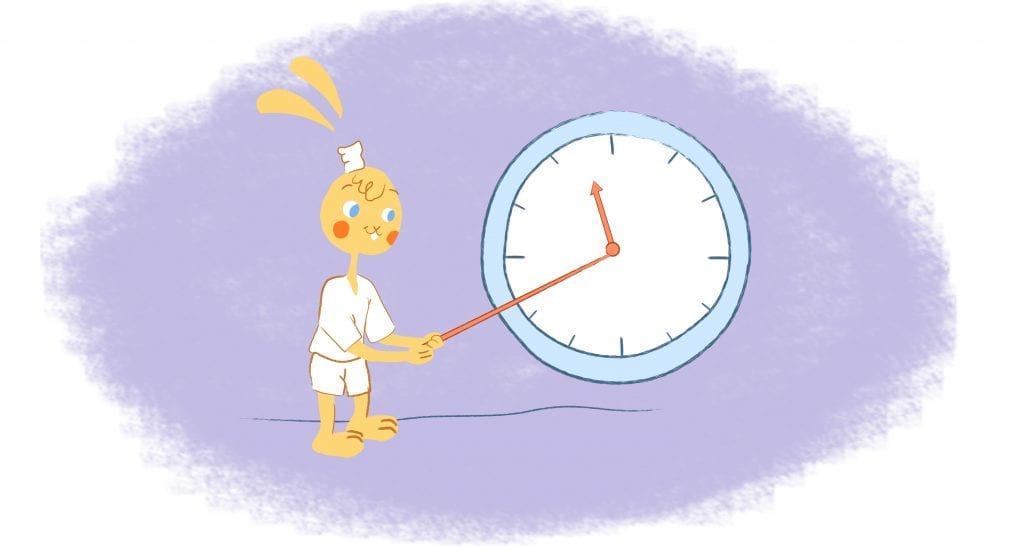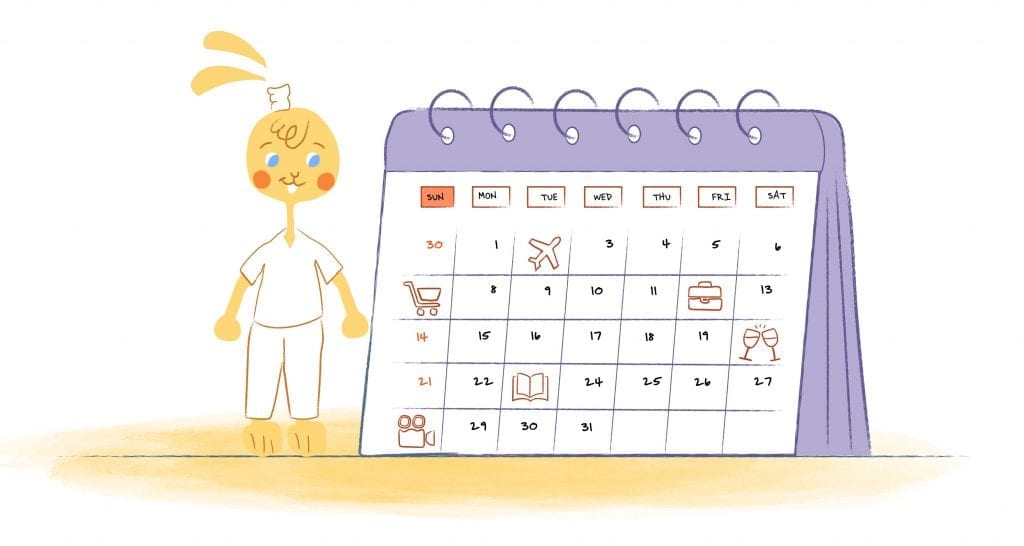

Most people quite literally live by a clock. We eat, sleep, work, and play according to the passage of time. Clocks tell us when to get up in the morning and what time to get to work or school.
Our awareness of time starts at a young age. Parents put their toddlers in time out when they misbehave. Young school age children are told when it’s time to get ready for school and when school gets out.
A few years into grade school, kids learn to tell time on their own using analog clocks. From then on, they use clocks every day to measure the passage of time.
Although we understand time at that point, many of us quickly realize there never seems to be enough of it. Not only that, but we may inaccurately estimate its passing. In other words, we have time passage awareness disorder.
What it is
Time passage awareness disorder, or TPAD, is a term that was made up by a friend and fellow blogger. In her podcast, Nony explains TPAD and gives examples. Basically TPAD happens when you either over, or under, estimate how long certain tasks can take.
However, Wikipedia has a different name for a similar disorder. It is called dyschronometria. Although it’s a long, difficult to pronounce word, the definition is pretty much the same as TPAD.
The difference between the two is that dyschronometria is commonly caused by damage to the cerebellum in the brain. Causes of this damage are usually disease, trauma, or genetics.
TPAD, on the other hand, is just something that happens when we make errors in judgement.
Why it is a Problem
The reason TPAD is a problem should be fairly obvious. No matter if you are at work or doing tasks at home, an accurate estimate is important. Otherwise, you can easily get behind on work.
Once you get behind, either at work or at home, recovering from that is difficult. At times you must sacrifice family time, sleep, or other events, in order to get everything done.
But TPAD causes problems in other ways, too. Scheduling appointments, preparing for meetings, and working on projects could all be affected by TPAD.
If you plan such things inaccurately, you’ll not only get behind, your job itself could be in jeopardy.
Tips to Combat time Passage Awareness Disorder
After you become aware of TPAD there are several things you can do to combat it.


1. Use a Timer
One of the suggestions Nomy makes in her podcast is to use a timer. You can use a timer in a couple of different ways to reduce TPAD.
Timed Intervals
The first way is to set a timer and only allow a set amount of time for certain tasks. For instance, if you know you spend too much time on emails, try using timed intervals for email management.
To decrease the time you spend emailing, set a timer for 15 minutes when you begin. When the timer goes off, finish the email you are on and move on to other tasks. Check your email throughout the day this same way rather than letting it interrupt other work all day long.
Timed Tasks
But maybe 15 minutes is not long enough to make an impact on your email list. If that is the case, maybe you need 20 minutes. The best way to find out is to time how long it takes to get through them each time.
Start a log and keep it for a week or so. This should give you a feel for how long you spend emailing. During each email break throughout your day, set a timer. When you finish, write down how long it took.
At the end of each day, add up all the time and divide by the number of times you checked your email. This will give you the average amount of time spent emailing during each email break. Over several days you’ll get a feel for how long you should be spending during your email breaks.
2. Eliminate Unnecessary Time Sucks
Another way to combat time passage awareness disorder to eliminate unnecessary time sucks. Even though this won’t create more time, or stop time from passing, it will help.
Getting rid of activities that take your time away allows you to use if for other things instead. Workplace gossip, social media, and smoke breaks should be eliminated or kept to a minimum.
You should watch for other unnecessary activities that take away valuable time. Eliminate or change as many as possible to give time for what is truly important.


3. Set Up Calendar Reminders
Calendar reminders are great tools to keep you aware of time as it passes. If you don’t already use a calendar app that includes them, check into getting one and learn to use it to your advantage.
As you work, calendar reminders can be created to send you notifications that a new time block is soon to begin. This prompts you to complete the work you’re currently doing so you can move to the next project.
4. Work in Blocks of Time
Despite having a “to do” list, some people still struggle with TPAD and a loss of productivity. If you are one of them, perhaps you would do better working in blocks of time instead.
Try arranging your work tasks so that similar things are done one after the other. In addition, set up “appointments” on your daily calendar to block out time for big projects. That way you make sure those important jobs get completed.
5. Utilize Time Tracking
To make you a more productive efficient worker you could utilize time tracking systems. This is another way of determining how long different tasks take as you complete them.
Time tracking apps help you find lost time that wasn’t productive. In addition, some of them can be tied to billing systems for customer invoicing, if appropriate.
6. Complete Quick Tasks in Between Large Ones
Lot of times it’s easier to get quick, easy tasks done at the beginning of the day. Working that way enables you to feel accomplished as you mark things off your daily work list. Nevertheless, saving one or two of them could also be advantageous.
Let’s say you finish a big project but have 15 minutes until a meeting starts. Rather than wasting that time, tackle a smaller project from your task list.
You already know how long each repetitive task takes since you timed them earlier. Choose one that fits your time slot and use it to fill in the gap.
7. Stay in a Routine
The more time you use planning your next move or task, the less productive time you have. As an alternative, try to create, and then stay, in a daily routine.
Start your morning the same way each day. Listen to voicemail messages, read texts, and respond to emails. Then tackle your work list next.
Take a break part of the way through the morning to check your emails again. Next, take on another big task.
Just after lunch time is over, look at your emails again. Plan the rest of your day in a similar fashion – you get the picture.
Getting into a routine helps you work faster and lose less time deciding what to do next. Additionally, you’ll be less prone to incorrectly estimating the time it takes to get through your morning.
Pretty much everybody lives and works by the clock. Even so, you can become more aware of time and combat TPAD successfully so you can get more done.











Kayla Sloan
Kayla is a financial productivity expert that wants to help everyone pursue a life of freedom. My goal in life is to help people feel less chained to their jobs. You deserve to find the best. Lets get their together!